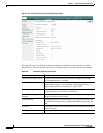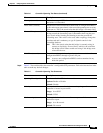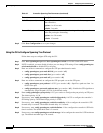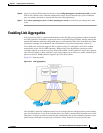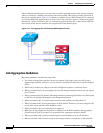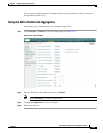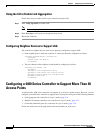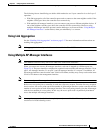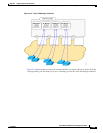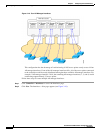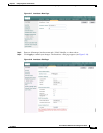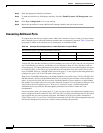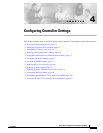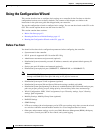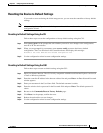
3-32
Cisco Wireless LAN Controller Configuration Guide
OL-8335-02
Chapter3 Configuring Ports and Interfaces
Configuring a 4400 Series Controller to Support More Than 48 Access Points
Figure 3-14 Two AP-Manager Interfaces
Note Cisco recommends that you configure all AP-manager interfaces on the same VLAN and IP subnet.
Before implementing multiple AP-manager interfaces, you should consider how they would impact your
controller’s port redundancy.
Examples:
1. The 4402-50 controller supports a maximum of 50 access points and has two ports. To support the
maximum number of access points, you would need to create two AP-manager interfaces. A problem
arises, however, if you want to support port redundancy. As shown in Figure 3-14, the static
AP-manager interface has port 1 assigned as the primary port and port 2 as the secondary, or backup,
port. The second AP-manager interface has port 2 assigned as the primary and port 1 as the
secondary. If either port fails, the controller would be left trying to support 50 access points on a
port that supports only 48. As a result, two access points would be unable to communicate with the
controller and would be forced to look for an alternate controller.
2. The 4404-100 controller supports up to 100 access points and has four ports. To support the
maximum number of access points, you would need to create three (or more) AP-manager
interfaces. Figure 3-15 illustrates three AP-manager interfaces, each with a unique primary port and
sharing the same secondary port. If the primary port of one of the AP-manager interfaces fails, the
controller clears the access points’ state, and the access points must reboot to reestablish
communication with the controller using the normal controller join process. The controller no longer
includes the failed AP-manager interface in the LWAPP discovery responses. The access points then
rejoin the controller and are load balanced among the available AP-manager interfaces.



